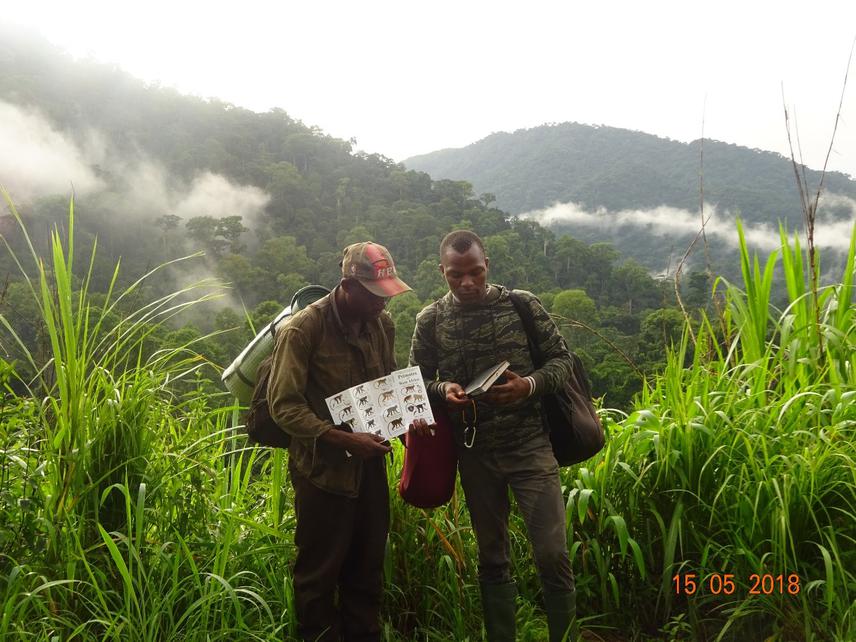Chefor Fotang
Other projects
8 Mar 2018
Ecology and Behaviour of the Nigeria - Cameroon Chimpanzee in Kom-Wum Forest Reserve and Mbi Crater Kefem Landscape in the North- West Region of Cameroon
20 Aug 2019
Human-Chimpanzee Interaction and Habitat Suitability of the Nigeria-Cameroon Chimpanzee (Pan troglodytes ellioti) in Kom-Wum Forest Reserve, Cameroon
14 Oct 2020
Fruit Availability and Dietary Ecology of Nigeria-Cameroon Chimpanzee (Pan troglodytes ellioti ) in Kom-Wum Forest Reserve, Cameroon
The Nigeria-Cameroon chimpanzee (Pan troglodytes ellioti) has the lowest population size of all chimpanzee subspecies, with 3,500 and 9,000 individuals remaining in the wild (Morgan et al., 2011). It is endemic to Cameroon and Nigeria and is the least studied of all chimpanzee subspecies (Morgan et al., 2011). Its population has decreased to more than 50% within the last thirty years due to habitat loss, hunting for bushmeat, and trafficking of body parts for traditional medicine, and a population reduction of up to 80% is expected by 2060 (Morgan et al., 2011; Oates et al., 2016). This chimpanzee subspecies face the greatest threats in two of its broader range sub-regions (north–west Cameroon and south–west Nigeria), with probably less than 250 chimpanzees per subregion justifying a critically endangered status at a sub-regional level (Oates et al., 2016). The IUCN endorsed a regional conservation action plan for the chimpanzee and outlined measures and strategies to prevent further population decline across its distribution range (Morgan et al., 2011).

The principal investigator (dressed in army camouflage pullover) investigating from a field guide which primate species are present in Kom-Wum Forest Reserve. © Ambe Godwill Akou.
In this plan, the Kom-Wum Forest Reserve in the north-west region of Cameroon is described as a priority conservation site for its conservation (Morgan et al., 2011). Morgan et al. (2011) suggested that intensifying law enforcement activities and community engagement have the potential to reduce threats to its survival in the reserve. Since 2014, community eco-guards have been working in collaboration with researchers and non-governmental organizations to determine the abundance and distribution of chimpanzees in the reserve (Chou et al., 2017; Doumbé, 2015). In 2018, Fotang et al. (2021) started a research project to study their behavioural ecology and specifically to better understand their abundance, habitat requirements, food utilisation, and threats to their survival. A population of 83 chimpanzees was estimated, and this population is threatened by human activity and forest degradation, particularly poaching, trapping, illegal logging, farming, human-chimpanzee conflict, and unsustainable exploitation of non-timber forest products (Fotang et al., 2021). Recommendations were made to tackle poaching and trapping as major threats (Fotang et al., 2021).
The main objective of this project is therefore to contribute to enhancing chimpanzee conservation in the reserve and specifically to:
1. reduce illegal human activities (bushmeat hunting/trapping in particular) in the reserve to 80 percent by December 2024,
2. improve the livelihood of local community members around the reserve, and
3. raise conservation awareness in local communities around the reserve.